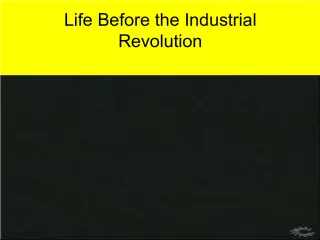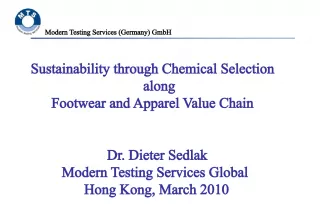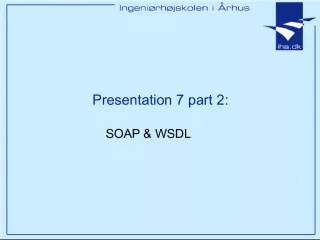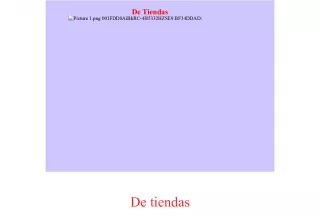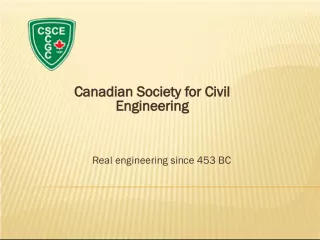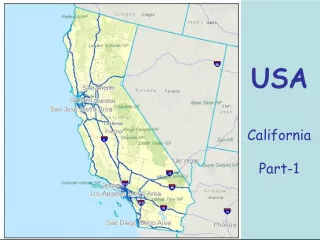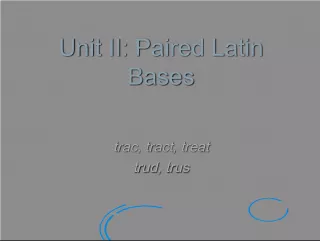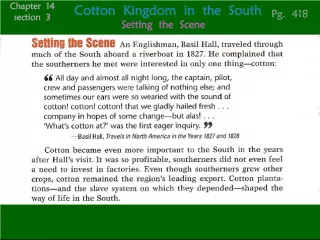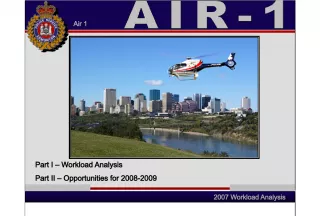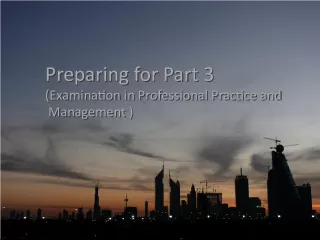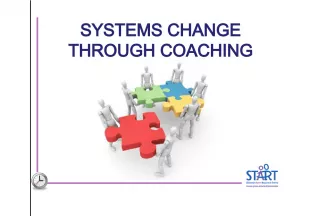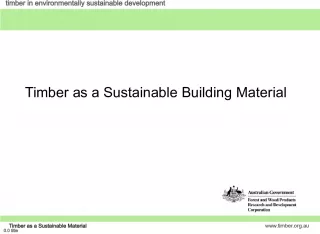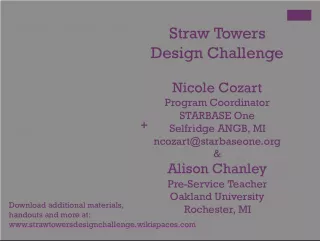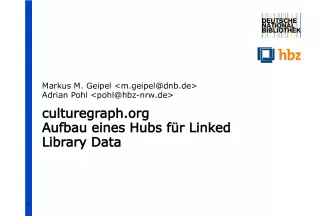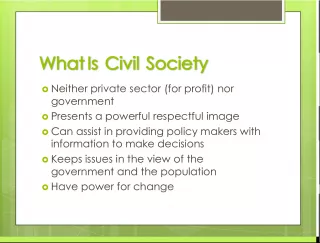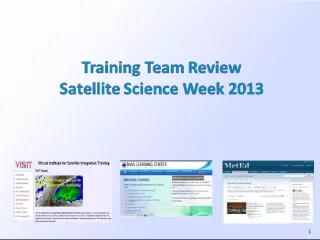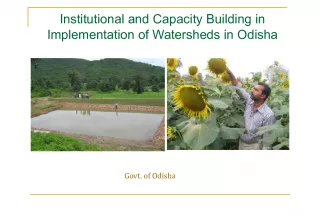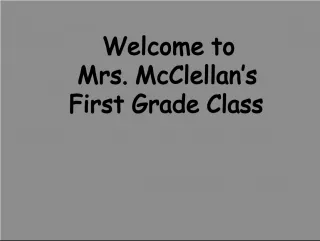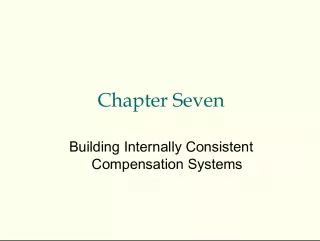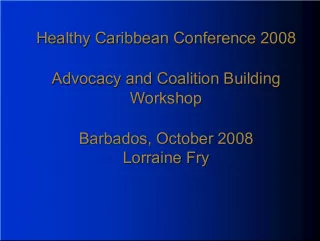Part Textile Apparel Building BlocksChapter T
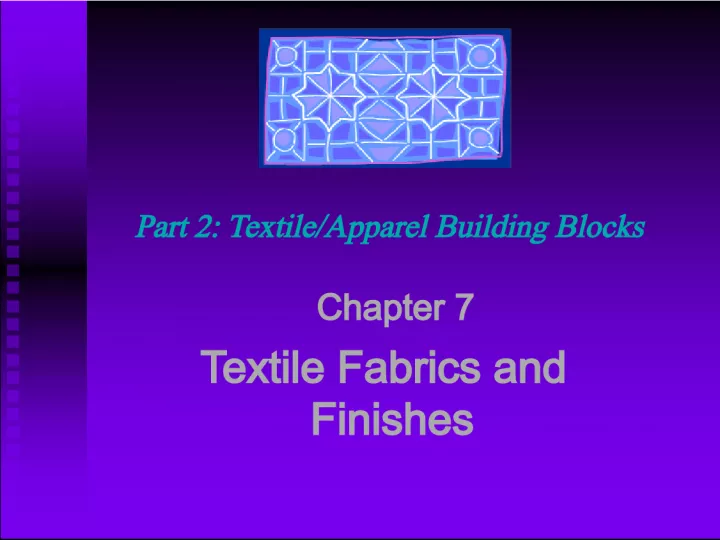

Part Textile Apparel Building BlocksChapter Textile Fabrics and Finishes Objectives Identify most common fabric constructions Describe main fabric finishing procedures Recognize importance of qualit
- Uploaded on | 0 Views
-
 rishi
rishi
About Part Textile Apparel Building BlocksChapter T
PowerPoint presentation about 'Part Textile Apparel Building BlocksChapter T'. This presentation describes the topic on Part Textile Apparel Building BlocksChapter Textile Fabrics and Finishes Objectives Identify most common fabric constructions Describe main fabric finishing procedures Recognize importance of qualit. The key topics included in this slideshow are . Download this presentation absolutely free.
Presentation Transcript
Slide2Part 2: Textile/Apparel Building BlocksChapter 7 Textile Fabrics and Finishes
Slide3Objectives Identify most common fabric constructions Describe main fabric finishing procedures Recognize importance of quality and performance standards Summarize important aspects of the textile industry Explain how finished fabrics are sold down the chain Cite textile industry trade information Tell about future predictions for textiles
Slide4Fabric Design andConstruction Two forms of design Structural Design “Building in” texture or interest during manufacturing process Weaving and knitting most common Applied Design Adding color, pattern, or other features to the structural design Printing on fabric
Slide5Fabric ConstructionMethods Weaving Plain: crosshatch pattern Plain: crosshatch pattern Twill: diagonal wale Twill: diagonal wale Satin: floating yarns Satin: floating yarns Knitting Weft Warp Nonwoven Fused Felted Films
Slide6Fabric Terms Grain – direction yarns run in the fabric Lengthwise - warp Crosswise - weft Diagonal - bias Selvage “Finished” weft edge of fabric SELVAGE SELVAGE BIAS WARP WEFT CUT EDGE
Slide7Variations of Weaves Stripes Checks Plaids Jacquard Pile fabrics Terry cloth Corduroy Velvet
Slide8Knitting Looping yarn together Made using one yarn Built-in stretch Wrinkle resistant Does not ravel like wovens, but may run Weft (filling) stretches in both directions Warp stretches one direction; run-proof
Slide9Nonwoven Fabrics Compact web of fibers (not yarns) constructed using Moisture Heat Chemicals Friction Pressure No grain
Slide10Other Construction Methods Laces and Nets Made by knotting Decorative trim Braids Decorative trims Bonded fabrics Fusible web Interfacing and hem tape Quilted fabrics
Slide11Fabric Finishing Converters Mills that change greige goods into finished fabrics Applying colors, designs, or surface treatments Bleaching Dyeing Printing Finishes
Slide12Dyeing Fiber Adding color to fibers before spinning into yarns Yarn Placing yarns in dye bath before making into fabric Piece Fabrics dyed after weaving or knitting Garment Dyed after construction
Slide13Printing Adding color, pattern, or design to surface of fabric Overall prints Same across fabric Directional prints Specific direction to pattern Plaids Even - same in warp and weft Uneven - different in warp or weft
Slide14PrintingMethods Roller Applies color design by roller Screen Similar to stenciling Rotary Screen Applies color design by cylinder- shaped nylon screens Heat Transfer Design on printed paper transferred to fabric by heat and pressure Digital Computer method uses ink-jet printing Flocking Fibers attached by patterned glue
Slide15Fabric Finishes Mechanical finishes affect size and appearance By heat, moisture, stretching, singeing Example: preshrinking Chemical finishes affect performance Permanent press Waterproof or water repellent Flame resistant Antistatic Stain and soil resistant Release substances such as antibiotics or insect repellants
Slide16Standards Quality Rate textiles according to levels of defects Performance Rate textiles for specific end-use suitability Six Sigma Measure and improve company’s statistical analysis to increase profits
Slide17The TextileIndustry Specialized companies perform stages of the textile segment of the chain Technology necessary CAD/CAM Fashion Tracking designs, trends, forecasts Marketing Planning, pricing, promoting, distributing
Slide18Selling Finished Fabrics Staple fabrics Sold each year with little or no change in construction Novelty fabrics Fashion fabrics that change with style trends Overruns When a mill makes more fabric than was ordered by customers
Slide19Trade Information National Textile Association Includes weavers, knitters, fabric-making companies, and firms that dye, print, and finish fabrics American Association of Textile Chemists and Colorists (AATCC) Wet processing aspects
Slide20Future of Textiles Continued U.S. innovation Stay globally competitive Fully automate plants Use computerized methods to fill small orders for unique products Increased knit production Textile firms need more sophisticated marketing techniques
Slide21Do You Know . . . Colorfast means a fabric's color will not change with time, use, or cleaning. Hand is the term used for textiles that refers to the way fabrics feel to the touch. Hand may apply to drape, softness, firmness, crispness, or elasticity.
